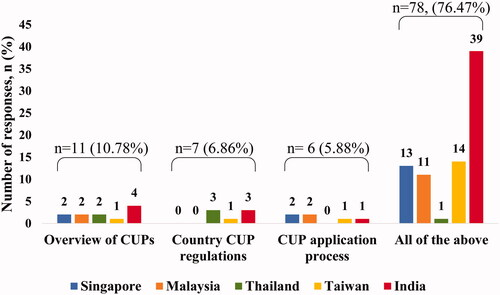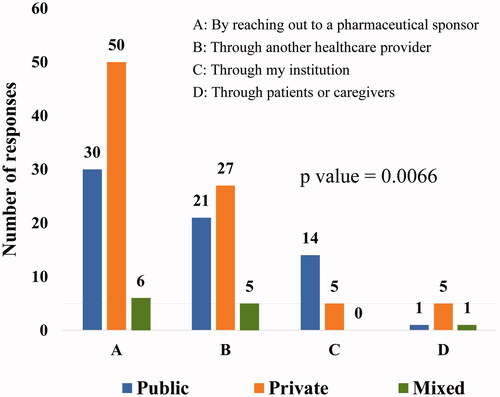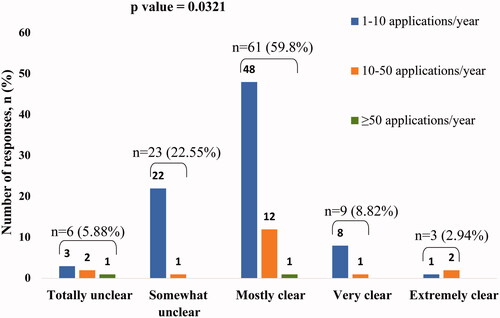Figures & data
Table 1. Response data for the key question items (N = 102).
Figure 1. Country-wise preference for the content of educational modules. The majority (76.5%) of the respondents favored a complete educational module on CUPs, covering an overview of CUPs, country-specific CUP regulations, and the application process. Though country-wise response rates on preference for content were different, an inter-country comparison could not be performed as sample sizes across the countries were highly variable.

Figure 2. Source of awareness on existing CUPs based on the type of clinical practice. Type of clinical practice plays a statistically significant role in awareness regarding existing CUPs (p=.0066). Reaching out to a pharmaceutical sponsor was the most favored method of gaining awareness by oncologists across all types of clinical practices (multiple options were permitted for selection of the response). Public, public/government hospital/clinic; private, private hospital/clinic; mixed, both public and private hospitals/clinics

Figure 3. Association between clarity of application process and number of applications submitted for CUP over the last 12 months. The number of applications submitted was significantly associated with the clarity of the application process for CUP set in place by pharmaceutical sponsors (p=.0321). Participants with the response as "mostly clear" submitted the highest number of applications to pharmaceutical companies over the last 12 months.

